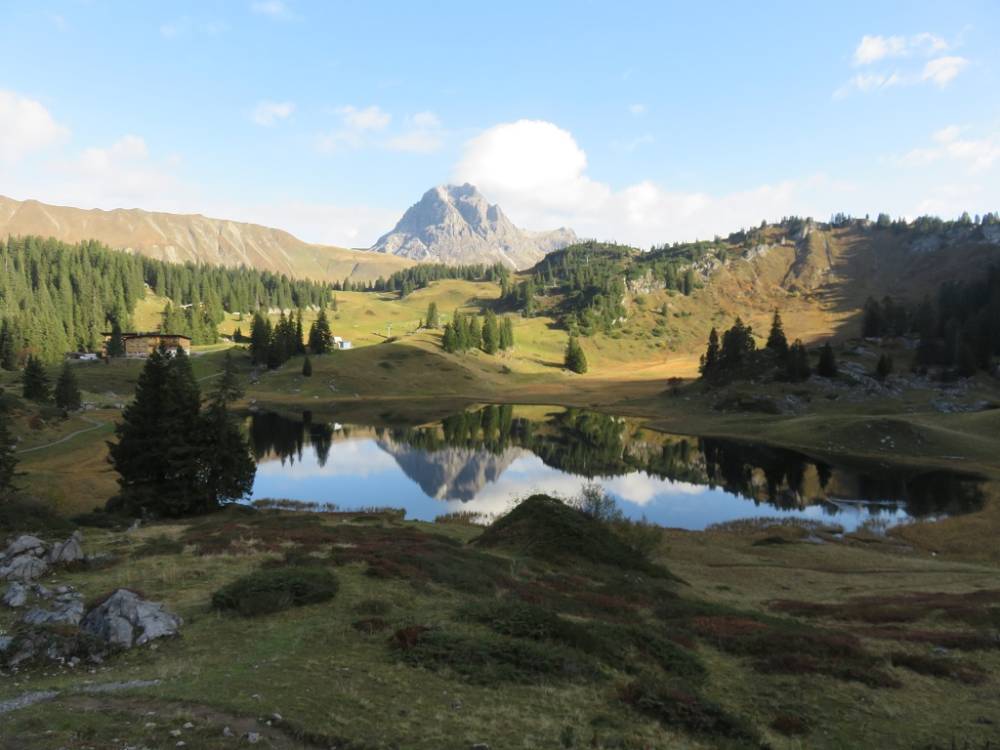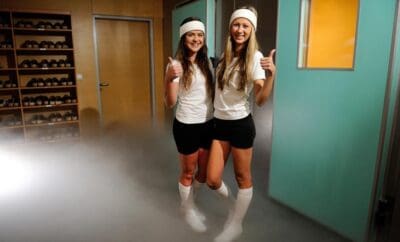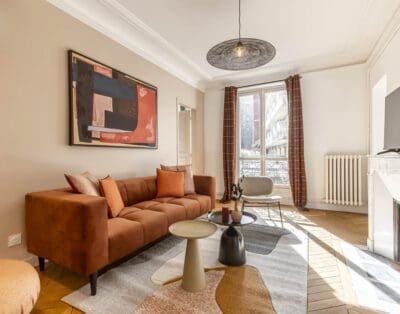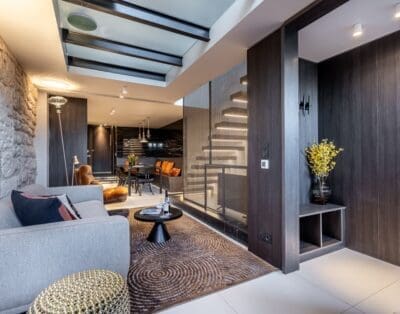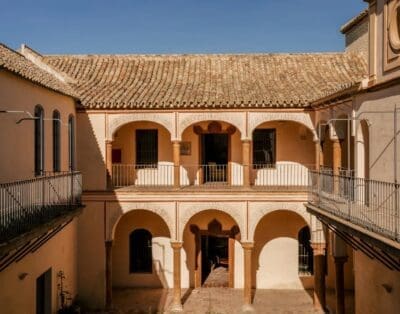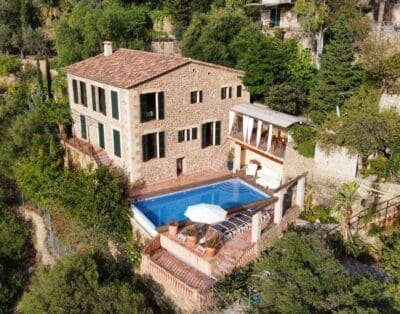VIENNA TO VORARLBERG: ART, ARTISANS & ALPINE BATHING
St. Stephen’s Cathedral roof tiles, depicting the Imperial double-headed eagle and coat of arms of the city of Vienna, were nicely framed by the original wood beams and window-scape of my suite in ‘The Leo Grand’ boutique hotel, itself a baroque masterpiece that has been looking out towards the cathedral’s spires since the 12th Century.
These symbiotic relationships between history, architecture and art, is replicated across Vienna and for which the city has become world famous. It has been an artistic and cultural heavy weight for centuries, with some key figures shaping the city into one we have come to admire and appreciate today, these include Wolfgang Amadeus Mozart, Ludwig Van Beethoven, Gustav Klimt and his protégé Egon Schiele and Sigmund Freud, amongst others.
In terms of art, Klimt, Schiele, and Freud whose books on psychoanalysis influenced artists, share their own symbiotic link; one that forms an enthralling way to uncover and explore Vienna. An early morning stroll amongst the stalls of the ‘Naschmarkt’ flea market, confirms the continuing pull of Klimt and Schiele’s artwork, with reproductions of their most famous paintings featured on vintage and antique objects. The flea market has been around since the 16th Century; today a vibrant and multicultural melting pot, with antiques and bric-a-brac at one end, and food market burgeoning with local produce, at the other.
MuseumsQuartier & Belvedere Palace
From Naschmarkt it is just a few streets and a leafy stroll towards the ‘MuseumQuartier’, passing residences of neoclassical form; Vienna is a fusion of architectural styles, most evident in the monumental buildings of the ‘Ringstrasse’, built between 1857-91, replacing the old city walls to showcase a new order and an eclectic mix of gothic, classicist and renaissance styles.
The ‘MuseumsQuartier’ is referred to as a ‘World Culture District’, such is the beauty and importance of this gathering of artistic and cultural institutions, one of which is the ‘Leopold Museum’. It is home to the largest collection of work by Egon Schiele, comprising of 40 paintings, works on paper, photographs and letters. Alongside Scheile’s work there is a section devoted to his mentor Klimt, exploring his need for artistic freedom which led to him forming the Vienna Secession.
As aesthetically pleasing as the art, is the cube-like structure of the Leopold Museum, designed with internal windows allowing one to pause and look across the light-filled atrium and view others admiring art, which felt like ‘art creating art’. Maybe this was in the mind of Rudolph Leopold, art collector and museum founder, as the building developed from plan to reality.
A few kilometres away, in Vienna’s third district, is the imperious setting of the Belvedere Palace where Klimt’s most famous work ‘The Kiss’ hangs; what amplified my experience of standing in front of Klimt’s gold-leaf masterpiece, was the journey from the lower palace through the three-terraced and landscaped gardens towards the upper Palace, culminating in being dazzled by Klimt’s large and most flamboyant work. Much of Klimt’s work reflects an enigmatic character, both physically and mentally; so there is often links made between his art and influence of his near-contemporary Sigmund Freud.
Sigmund Freud Museum
It is also said that Egon Scheile was deeply affected by Freud’s exploration of the subconscious, which brought to his canvases a means to express his own mental frailties. At 19. Bergstrasse, an elegant street in the Alsegrund area, stands the museum and former home of Sigmund Freud where he spent 47-years of his life. Display cabinets sitting on original parquet flooring, evolve the history of psychoanalysis and show personal items including his signature round-famed spectacles; more poignantly, are the photographs taken by Edmund Engelman in May 1938 just before the Freud family were forced into exile, leaving the oppression of national socialism behind; these rare images depict the setting in which one of the 20th centuries great thinkers created his works.
Bordering the Alsegrund district is Leopoldstadt and the second district, home to Prater Park. I had the chance to walk in Vienna’s green lung, whilst in full autumnal bloom and it was easy to imagine the Freud family taking their weekend stroll amongst the fallen leaves. Prater, formerly the hunting and riding preserve of the aristocracy, has been a public park since 1766. It was the site of the World Fair of 1873, which brought prestige, notoriety and international trade to the vast collection of Pavilions spread across 233 hectares; like any modern day World Expo, it brought new ideas and infrastructural change to an already cosmopolitan Austro-Hungarian capital. Next year will be the 150th anniversary of this momentous occasion.
Lake Constance & Vorarlberg’s creative soul
Whilst a 6.5hr train journey separates Vienna from the Vorarlberg region, the two are connected by a spirit of creative innovation with an artistic soul. From my carriage window, the silhouetted mountain peaks, rivers, alpine pastures and fleeting glimpses of Salzburg and Innsbruck, were all captured through the eye of a camera lens, before we finally arrived in Bregenz.
The Mediterranean-like vibe relaxes one instantaneously, especially walking beside the serenity of Lake Constance. A place where the mind runs free and shared influences cross borders between Germany, Switzerland and Lichtenstein. It is no wonder Vorarlberg’s capital is home to the world famous Bregenz Music Festival with its ultra-modern floating stage and the Kunsthaus Bregenz, one of Europe’s leading platforms for contemporary art, designed by Pritzker-winning architect Peter Zumthor.
These two stand-out structures and programmes, have placed Bregenz on the world cultural map, which continues to reverberate across the whole region. Contemporary art can be found in the most extraordinary locations, whilst traditional practises and heritage morph together, most clearly defined in some exceptional architecture and craftsmanship.
Bregenzerwald
Just kilometres from the lake’s shoreline and the village square of Schwarzenberg, quaintly unveiled itself to me, replete with the sound of cow bells; farmers had already moved their cattle from the high-mountain pastures into the valleys, part of their three-level farming known as ‘Alpine Transhumance’. Schwarzenberg is one of 23 villages in the Bregenzerwald, all providing their own unique, creative or artistic twist. For this village, the world’s largest Schubert Festival – ‘Shubertiade’ – takes place annually in June and August.
The village of ‘Krumbach’ invited 7 international architecture offices to redesign their small bus shelters, under the project ‘BUS:STOP’; from as far afield as Japan, Norway and Chile, architects created bus-stop art installations, elevating their primary function by reinterpreting the design in the context of the landscape, whilst taking advantage of Bregenzerwald’s deep-rooted culture of building and skilled craftsmanship.
In the village of ‘Andelsbuch’, another Peter Zumthor designed building lives. Reflecting Zumthor’s own love of crafts, the ‘Werkraum Haus’ is a glass enclosed exhibition space and HQ for an association of master craftsman. Werkraum represents more than 100 members, from carpenters to electrical engineers who develop old world skills into new world innovations. It is a lineage which stretches back to the master craftsman of the ‘Vorarlberg Baroque School’ of the 17th and 18th centuries, many of whom were responsible for some of the grandest Baroque churches in southern Europe.
Just off the main square of Schwarzenberg, cheesemongers ‘Kasladen & Lebensmittel’ is run by Hedi Berchtold; surrounded by grand wheels of cheese, her store forms part of the KäseStrasse (Cheese Route). The unique variations of the cheese, a by-product of the aromatic quality of ‘Heumilch’ (hay milk) all form part of the alpine farming ecosystem.
Schwarzenberg might be a one-hotel village, but the ‘Gasthof Hirschen’ is no ordinary hotel, but another example of harmonising old with the new. It has been in the ‘Fetz’ family for 265-years, always as a hostelry, and has been a place where royalty, artists and other eminent figures have stayed. Peter Fetz is the tenth-generation owner of the hotel, with a young entrepreneur’s mind-set, he stated “I am bringing urban to the countryside”. These few words mean much; for example, an ‘artist-in-residence’ programme, a gallery of art produced by young local talent featured on the ancient walls of the hotel and great gastronomy that has people crossing borders to sample. His forward-looking approach is always based on looking-back to his predecessors, who he sites as having “a love of travel and open minded to adopt new ideas”.
Fetz loves the landscape “I am a keen trail-runner and we often host guests who love cycling on bikes that cost as much as cars”. He is seeing a growing demand for healthier more sustainable vacations and this region’s landscape is perfectly suited, something we were to find out when we used the public bus network to reach the ‘Hochtanbergpass’, from where we set out on foot, with local guide Christian Fritz, to reach ‘Lech-Zürs am Arlberg’.
The hike’s 12km route allowed us to cross softly undulating alpine hills, look across to expansive plateaux’s, pass by the mirror-like Körbersee Lake and admire the regions highest peak, ‘Braunarlspitze’ at 2649m. All the while, our mountain guide was sharing stories of local farmers, fossil finds and ‘Bursteeg’, a 700-year old village with just two inhabitants, before arriving in Oberlech.
Alpine Bathing in Lech-Zürs
Lech-Zürs am Arlberg, in keeping with the rest of the region, pushes the creative boundaries whilst nurturing its environment as a summer and winter resort, often attracting European royalty. Two world-renowned artists have used this epically beautiful high-altitude backdrop as their blank canvas.
Of the 100 cast-iron human figures, designed and placed into the landscape by British Sculptor, Antony Gormley, only one remains. Under the project ‘Horizon Fields’ these figures were spread across 150 square kilometres at the exact altitude of 2,039m. This expansive art installation was hugely popular, but once it was removed, locals pined for a new project, one I was going to experience via Hotel Goldenerberg’s Alpine Bathing experience.
“Alpine Bathing is the perfect way to clear the mind and connect with nature” said Maria, the hotels ‘yogic’. Leading the group through a series of breathing techniques, her reasoning was to clear the mind through long uniform breaths. This was the start of our six-step sensorial journey that would culminate in reaching Lech’s other art installation ‘Sky Space’.
Under Maria’s instruction, we stepped barefoot across grass, pebbles, wood, before wading through a knee-high freezing pond, all as preparation to elevate our senses, as we headed towards a distant pine forest. In single-file the group followed like monks after their spiritual leader, snaking up the alpine hillside. With a clear mind and continuing to imbue the champagne-like alpine air and listening to the steady flow of a nearby stream. Part of the process of alpine bathing is to stop and take in Lech’s mood-boosting vistas, whilst sipping green tea.
The path now crossed into the pine forest, just as a family of deer disappeared between the conifers. The changing aroma and dappled light, provided the perfect canopy to follow Maria in a series of yoga techniques. All these activities were leading to the grand finale, which was meditation in ‘Sky Space’.
Lech’s now famous art installation created by visual artist James Turrell, is located at 1780m on a small hill called ‘Tannegg’. The domed roof the only evident part of building, which is integrated into the landscape. A 15m entrance tunnel led to the light-room, which phased between mood colours as we looked through an egg-shaped hole in the dome roof, connecting us directly with the sky. There could not have been a more meditative space in the Alps.
Skyspace-Lech typifies the synergy between art, architecture and the environment, something Austria always marries together so well. But the combination of Vienna and Vorarlberg is the ultimate way to heighten and even lighten one’s mental and physical well-being, even though these two regions lie at either ends of the country, it is well worth making the trek!
(Images by Ramy James Salameh)

